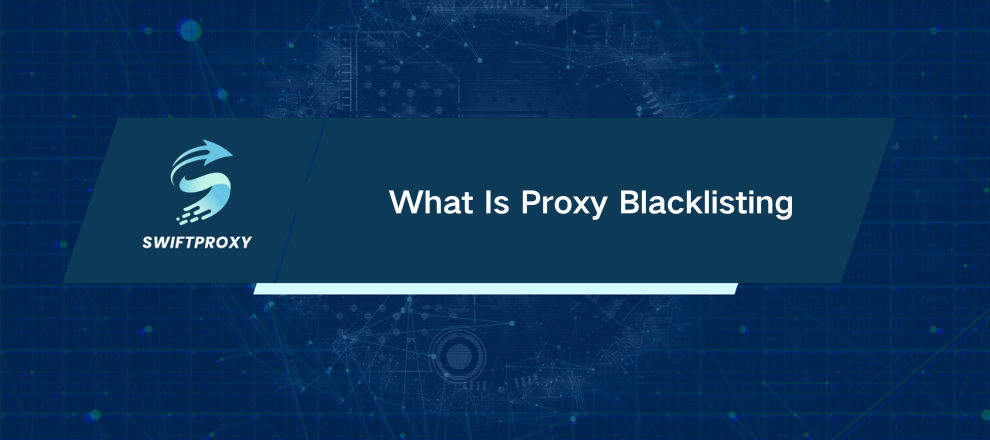What Is Proxy Blacklisting

Ever had a proxy that worked flawlessly one moment, then suddenly got blocked? You're not alone — proxy blacklisting is a stealthy disruptor that trips up countless users and businesses every day. It's frustrating, baffling, and often hidden behind the scenes. However, understanding how proxy blacklisting works gives you the power to avoid it and keep your online operations smooth.
What Is Proxy Blacklisting
At its core, proxy blacklisting happens when websites or services identify an IP address linked to a proxy and ban it. Why? Because proxies can be misused. They might be flagged for suspicious behavior, violating terms of service, or showing patterns typical of abuse. The moment your proxy's IP hits a blacklist, your access gets cut off — leading to those annoying "blocked" screens or slow connections.
Websites don't block IPs randomly. They deploy sophisticated algorithms scanning for red flags: multiple accounts from one IP, spikes in traffic, or signs of automated behavior. Streaming platforms like Netflix, for instance, aggressively hunt down proxy IPs to enforce regional restrictions, which explains why your favorite proxy suddenly stops streaming your shows.
Why Do Proxies Get Blacklisted
Several triggers cause proxies to get axed. Here's the breakdown:
Spam and Abuse: Spammers love proxies to flood emails, comments, or social ads. Nearly half of all global email traffic in 2023 was spam — a big reason proxies tied to spam get banned fast.
Terms of Service Violations: Platforms restrict content by region or limit account creations per IP. Using proxies to sidestep these rules is a quick ticket to blacklisting.
Security Threats: Proxies fuel DDoS attacks and hide hackers trying to breach systems. Networks fight back by blocking suspicious IPs instantly.
Network Abuse: Unauthorized data scraping and bandwidth theft are common. When proxies steal resources or overwhelm servers, they get cut off.
Government & Legal Restrictions: Some countries ban proxies to enforce censorship, while regulations like GDPR force services to block IPs violating data privacy laws.
How to Tell If Your Proxy Is Blacklisted
You don't need to be in the dark about your proxy's status. Here are some practical ways to check:
Sudden Website Blocks: Can't access Netflix or Amazon through your proxy anymore? That's a red flag.
Use Proxy Checker Tools: Proxy Checker scans multiple blacklist databases and gives you a quick status report.
Consult Blacklist Databases: Cross-check your proxy IP with public blacklists online to see if it's flagged.
Monitor Proxy Behavior: Watch for unusual traffic spikes or repeated access failures — these can trigger blacklisting before you know it.
What Can You Do
Rotate Proxies Regularly: Avoid patterns that get flagged by switching IPs often.
Use Residential Proxies: These are less likely to be blacklisted than datacenter proxies.
Limit Usage Volume: Keep traffic and requests within reasonable limits to avoid detection.
Avoid Suspicious Activities: Never use proxies for spam or violating terms of service.
Stay Updated: Regularly test your proxies and remove those on blacklists promptly.
The Bottom line
Proxy blacklisting isn't just a nuisance; it's a strategic defense by websites and services to keep their ecosystems safe and fair. But with the right knowledge and tools, you can navigate around these blocks like a pro — protecting your workflows and delivering seamless access every time.

















































